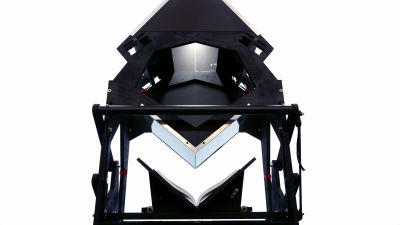'An intricate photograph of the inside of a musical instrument' that looks like the inside of a gigantic structure

The surface of the instrument is beautifully polished, but inside there are the maker's markings, repairs, signatures, and damage from years of use. Cellist Charles Brooks has released detailed photographs of the inside of such instruments, which are usually not visible.
Probe lenses and focus stacking: the secrets to incredible photos taken inside instruments: Digital Photography Review
https://www.dpreview.com/photography/5400934096/probe-lenses-and-focus-stacking-the-secrets-to-incredible-photos-taken-inside-instruments
Brooks is a cellist who has performed with famous orchestras in China, Chile, Brazil, and other countries. In addition to his musical activities, he also enjoys photography as a hobby, and after he retired from music, he began taking photos of musical instruments with his camera. Brooks has started his own project called ' Architecture of Music ,' in which he photographs the insides of musical instruments.
When Brooks was living in New Zealand, the COVID-19 pandemic prevented him from continuing his musical career. At that time, he noticed that many musicians were sending their instruments for repair. Brooks had seen some photos of the inside of instruments taken at a Berlin Philharmonic concert, so he wanted to find a way to photograph the inside of the instrument.
Below are some photos taken by Brooks of the inside of a 2021 Henri Selmer Paris saxophone.
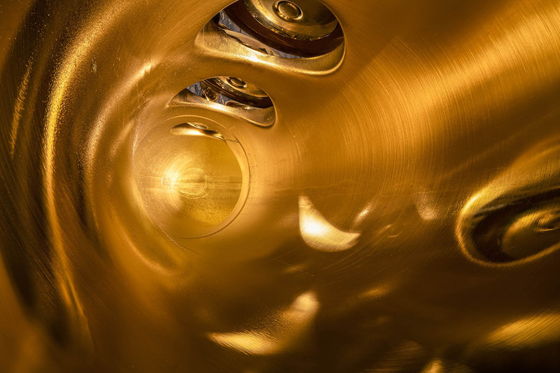
And by chance, optical manufacturer
'It wasn't that difficult,' Brooks said about taking pictures with the probe lens. 'If you remove the endpin at the bottom of the cello, it's easy to get the probe lens inside the instrument.' Brooks posted the photos of the inside of the cello he took on Reddit, and they got a huge response, so he started thinking about taking pictures of the inside of other instruments.
However, Brooks found that the LAOWA probe lens was too large for most instruments, so he used a heat gun to melt the waterproof casing of the probe lens, reducing its size and allowing him to photograph the inside of the piano.
Below are some photos taken deep inside the moving parts of one of the world's finest grand pianos, a Fazioli grand piano, handcrafted from over 8000 individual parts, photographed with a Panasonic DC-S1R and a LAOWA probe lens.
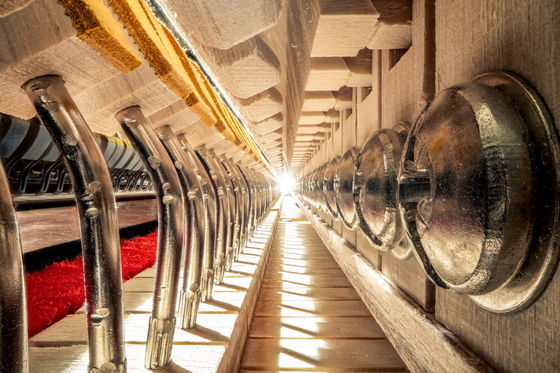
Brooks wanted to photograph the inside of the Stradivarius, but the violin has only a 5mm hole at the bottom, making it difficult to photograph the inside with anything other than a medical camera, which is not suitable for high-resolution photography.
Brooks purchased 20 to 30 adapters to attach medical scopes such as endoscopes to the camera. However, even if he was able to attach them to the camera, he faced problems such as covering part of the sensor and making most of the photos black. So Brooks managed to take a photo of the inside of the violin by attaching multiple adapters on top of each other.
However, the image quality still deteriorates when using multiple adapters, so Brooks consulted with camera manufacturers and went through a process of trial and error, eventually deciding to attach the scope to the Micro Four Thirds
Even so, when taking photos at maximum zoom ratio, the F-number rises to F250 due to the adapter, and normal studio lighting is practically completely dark. Therefore, when taking photos, multiple flashes with the highest possible power are used. However, using multiple flashes generates heat. Old instruments are particularly sensitive to heat, and it is necessary to ensure that the varnish on the surface does not exceed 28 degrees, so the instruments are cooled down each time they are photographed.
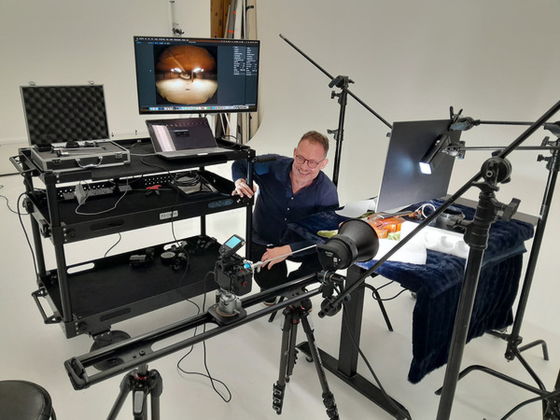
Below is Brooks' first photo of the inside of a violin. The photo was taken of a replica of a 19th-century Hopf violin. The violin has been played since it was made, but has never been repaired or disassembled.
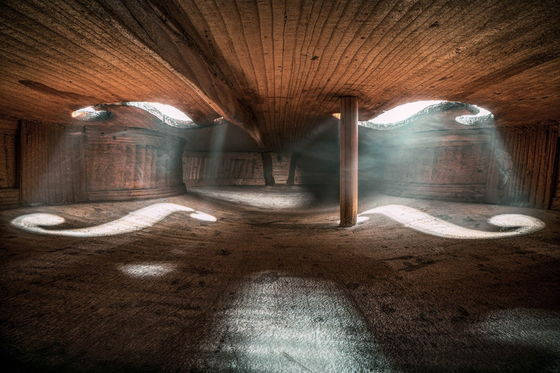
Brooks rotates the probe lens like a clock inside the instrument, takes a large number of internal photos, and then combines them to create a precise internal photo. According to Brooks, none of his internal photos combine less than 100 photos, and some combine more than 1,000 photos.
Brooks said that by creating a photo that looks like it was taken with an ultra-wide-angle lens, the brain can be tricked into thinking the subject is not small. He also used lighting to create a composition that looks like the sun was shining down on the subject, creating the illusion that the photo was taken inside some large structure.
Related Posts:
in Art, Posted by logu_ii




